In a previous post, we discussed how to make hair in fabric collage. Now it’s time to look at fur.
Whether a particular pet or a particular species of animal, finding a variety of fabric to depict the fur of your subject—such as our pup Kali, above—is as important as finding fabric reminiscent of the hair of a person’s portrait. It helps make your collage a little easier in any case.
One thing to avoid when making fur—just as when making hair—is trying to make the fur by using lots of individual strands. That sort of detail could call more attention than necessary to the fur and take away attention from other areas, such as the features of the face. Plus, it makes for more work than necessary and could be incredibly tedious. Instead, defining fur works by breaking the subject into shapes based on value—darks and lights. Look closely at a photo to see how those shadows and highlights separate and define the animal; the muzzle, the shape of the head, the neck and body. It’s all fur.
In this portrait of our dog Pippin (see completed quilt in “Dixie Dingo Dreaming”), I used the various values and patterns I saw in Australian Aboriginal print fabrics, to depict her overall short fur and the rolls of fluffy fur she had around her neck.
Just as there are different kinds of hair—long, short, curly, straight—there are different kinds of fur. Capturing the texture of fur—smooth, fluffy, or flowing—depends on choosing different patterns in your fabric.
One rule of thumb is: the longer the fur, the larger the print in the fabric.
However, there isn’t a single solution to any type of fur. There are probably as many solutions as there are quilters. The creators of each collage quilt below, came up with creative ways to indicate the fur of their animal. The following example quilts from me and my students, give you an idea of how we have solved these fur issues.
No lint brush required.
Smooth Fur
My cat Djinni (featured in “Golden Temple of the Good Girls”) has short, very fine hair. You can’t begin to see the individual hairs (except once she’s shed them onto my clothes). I felt the best way to reproduce the fur was as smooth shapes, using fabrics with small prints in them, even some calicos. I don’t usually use such small prints, but they worked here, giving a sense of the close-cut texture of her fur.
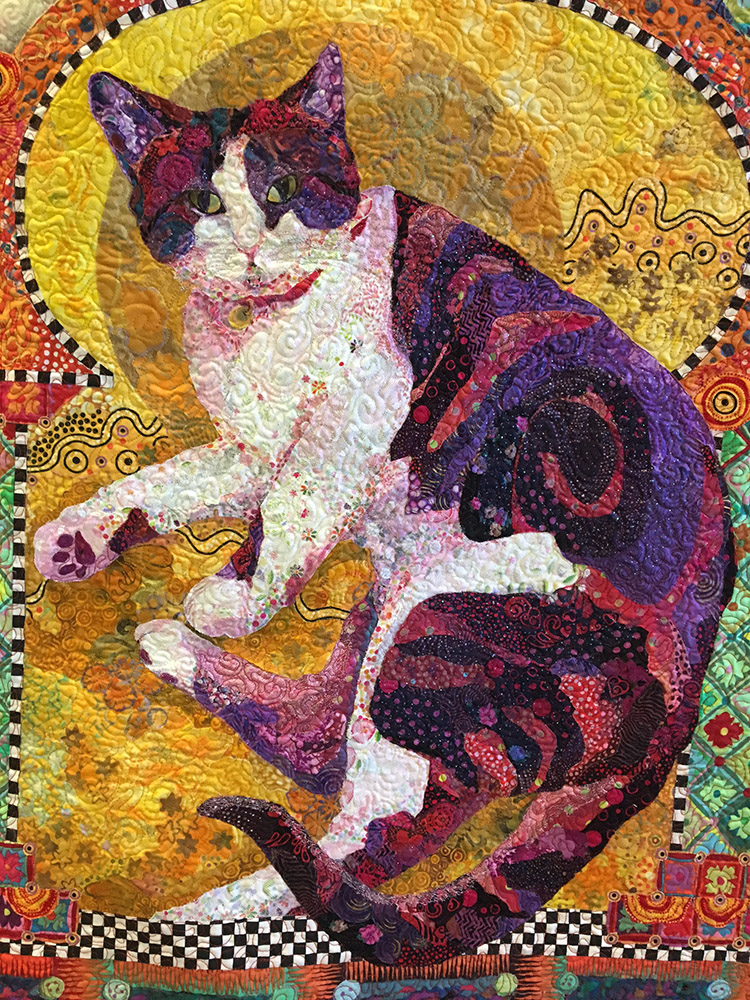
Joanne Hannon Shaw‘s ram, below, has a fairly smooth coat of fur. On the neck and chest, she found fabrics with especially “bristly” lines in the fabric, effectively indicating the visual texture and direction the fur is laying.
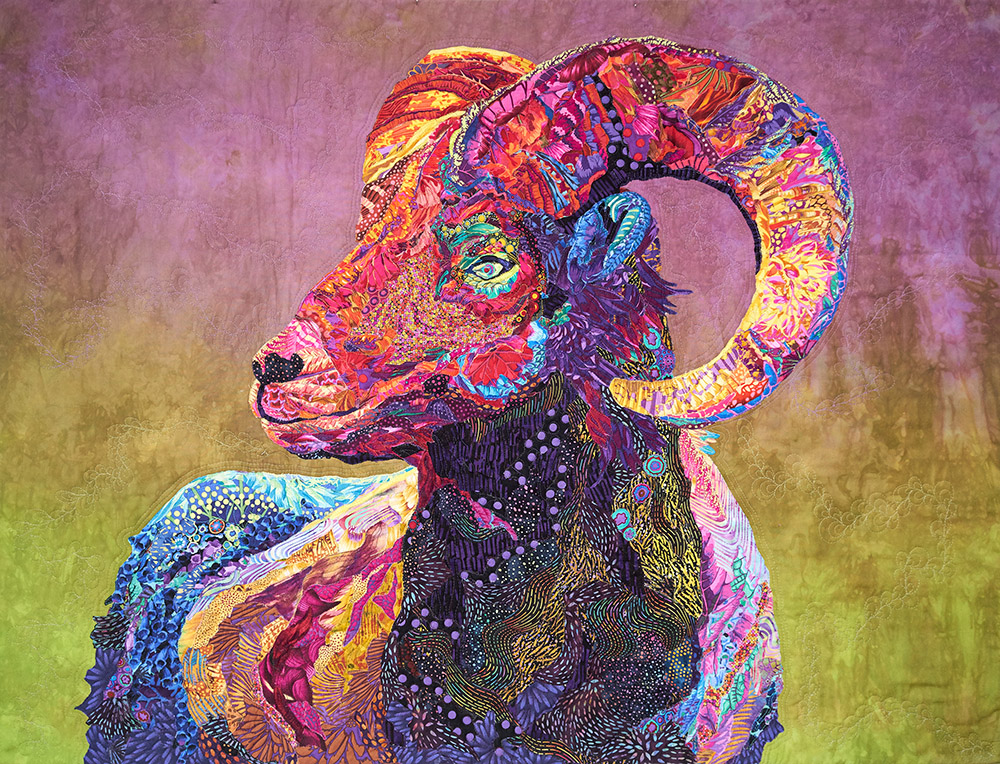
On the ram’s muzzle, the dotted fabric that Joanne used gives the sense of very short and perhaps sparse fur. This change in the fabric’s pattern also helps to give form to the animal’s face.
Joanne’s cat below, also has short hair. And like for my Djinni cat, the small patterns in the fabric she used helps to indicate the smoothness of the fur, with tufts of pattern used where needed.
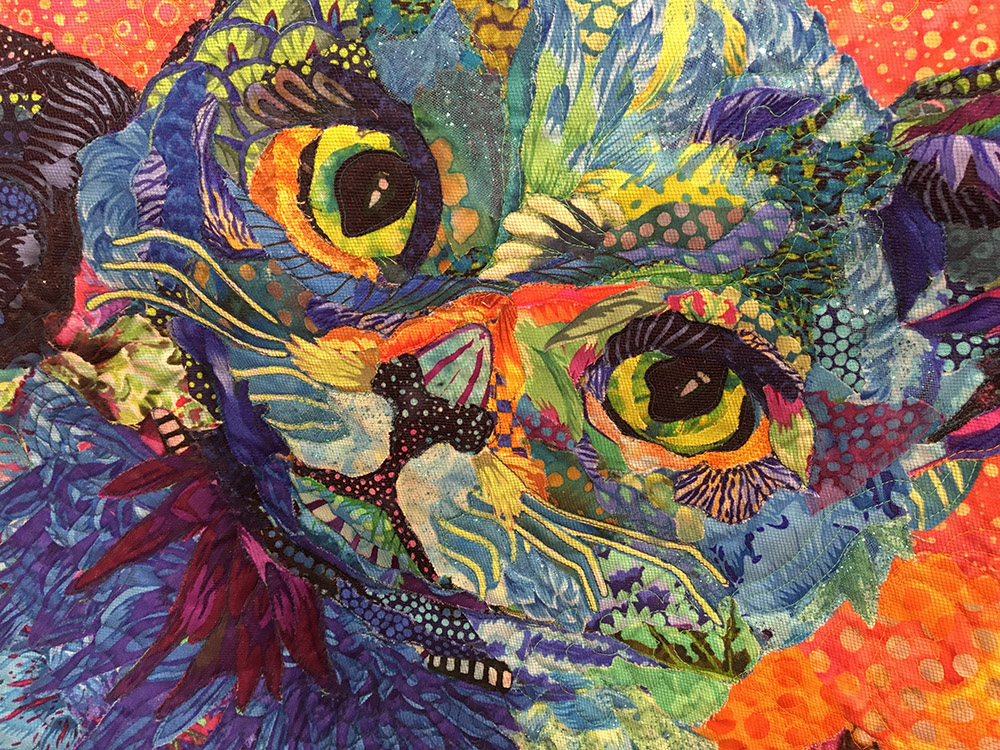
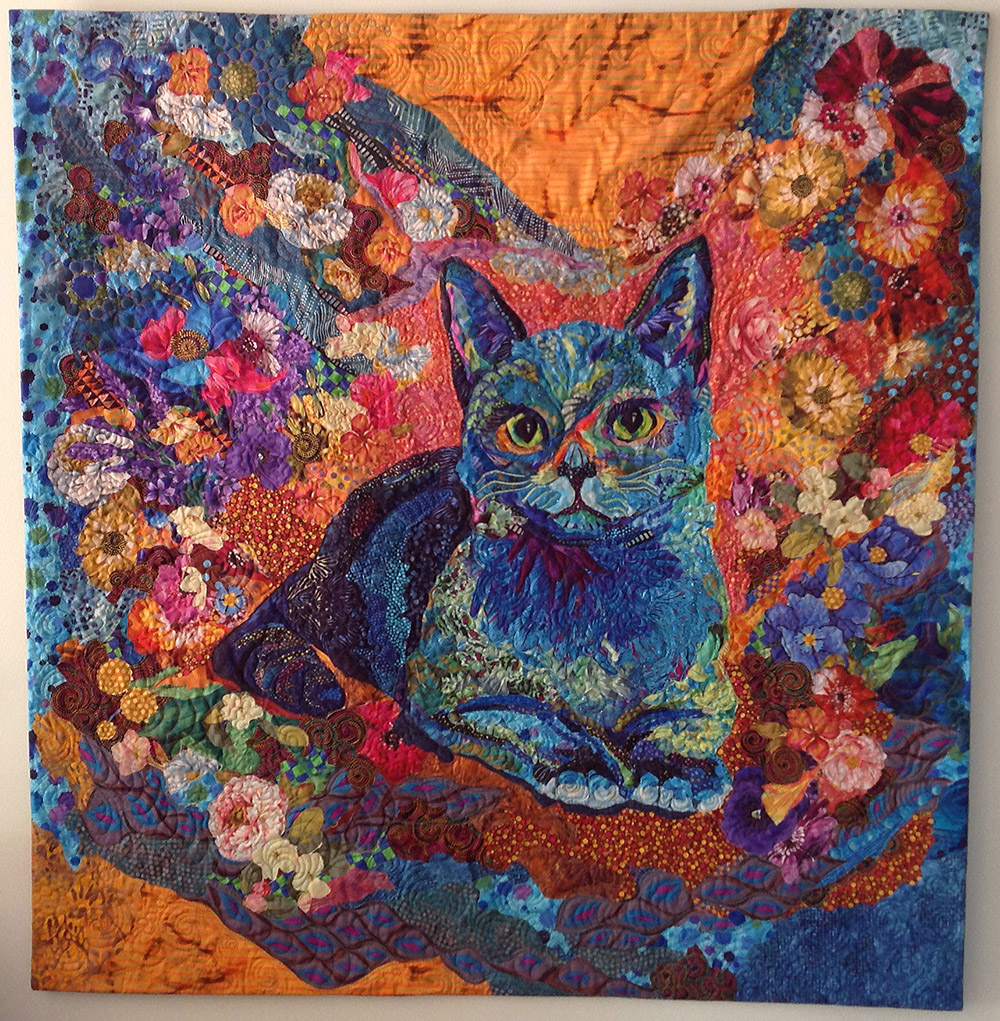
Robyn Williams—who I first met at the 2016 Australasian Quilt Convention, Melbourne, Australia—uses a few larger patterned fabrics with rounded and soft designs such as flowers and spirals, giving the fur of her wallaby below, a dense but soft look.
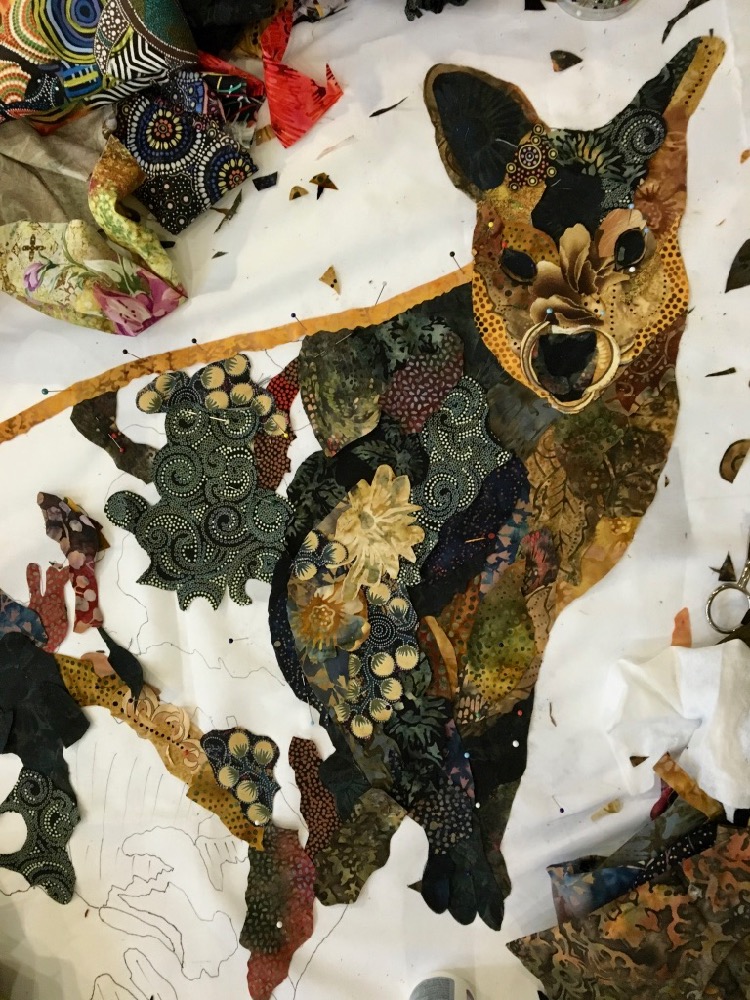
Here and there the variation in fabric pattern gives the look of tufts of longer fur, such as on the elbow and knee. Robyn’s use of a mixture of dark and light values gives this fellow’s fur a sun-dappled look within his Australian foliage.
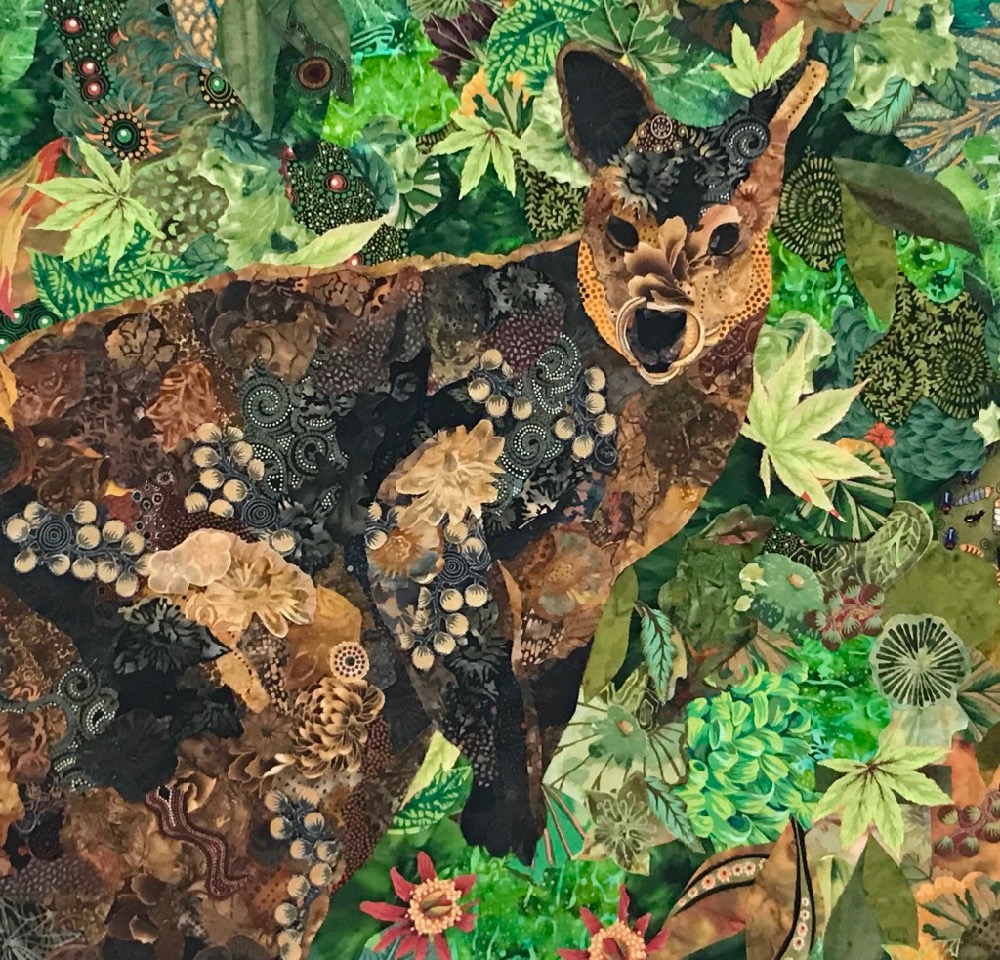
Fluffy Fur
My husband Tom’s dog, Kali, has fluffy fur. You can see that I used larger print fabrics than in the quilt of my Djinni cat. The white color of her fur presented its own challenges. I decided on blue as the color for the darker values, the shadows, yet she still looks white. Again, the longer lines in the fabric print on her left front leg, helps to depict that slightly longer fur. Using fabric with spirals hello to show her cute little curls.

Darlene Determan’s dog Claire below, also has fluffy fur, though it’s a little longer than Kali’s. The use of flower-petal and leaf prints helps to indicate the tufts of fur around her cute little face in this detail from a larger quilt.
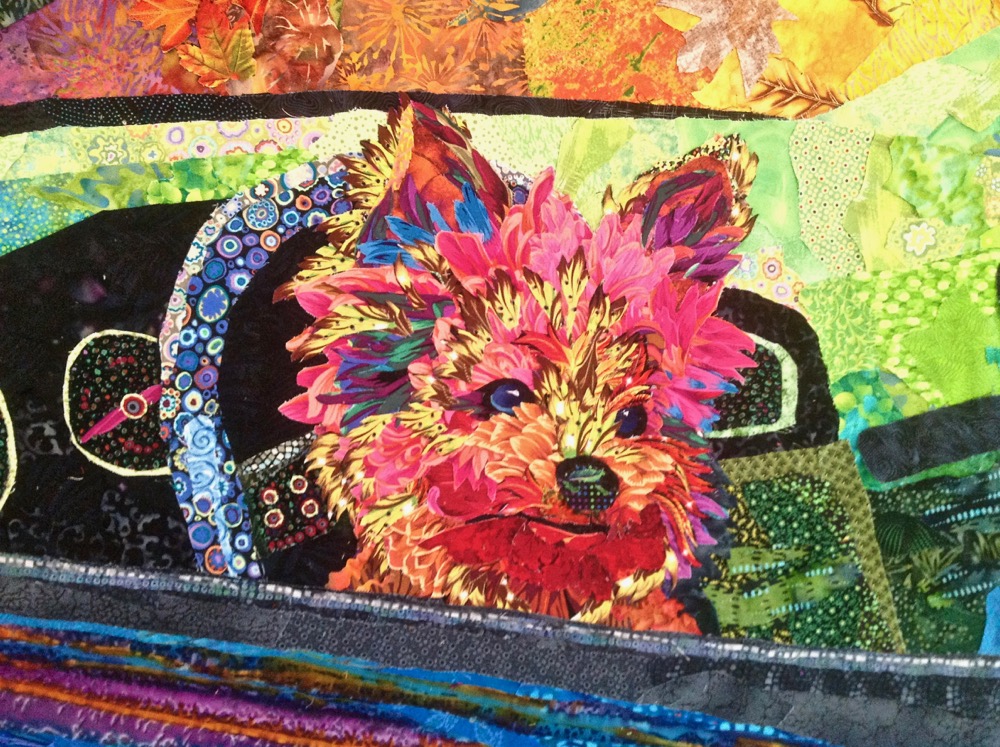
Ria Mille was so successful in portraying the fluffy softness of these two koalas below (featured in this blog post), that I just want to pick them up and cuddle them. Like many animals, these koalas have a couple different lengths of fur—shorter on the body, longer on the ears. Ria used gently curved floral and leafy printed fabrics in a variety of soft shades to portray her dual portrait based on a photo by Joel Sartore.
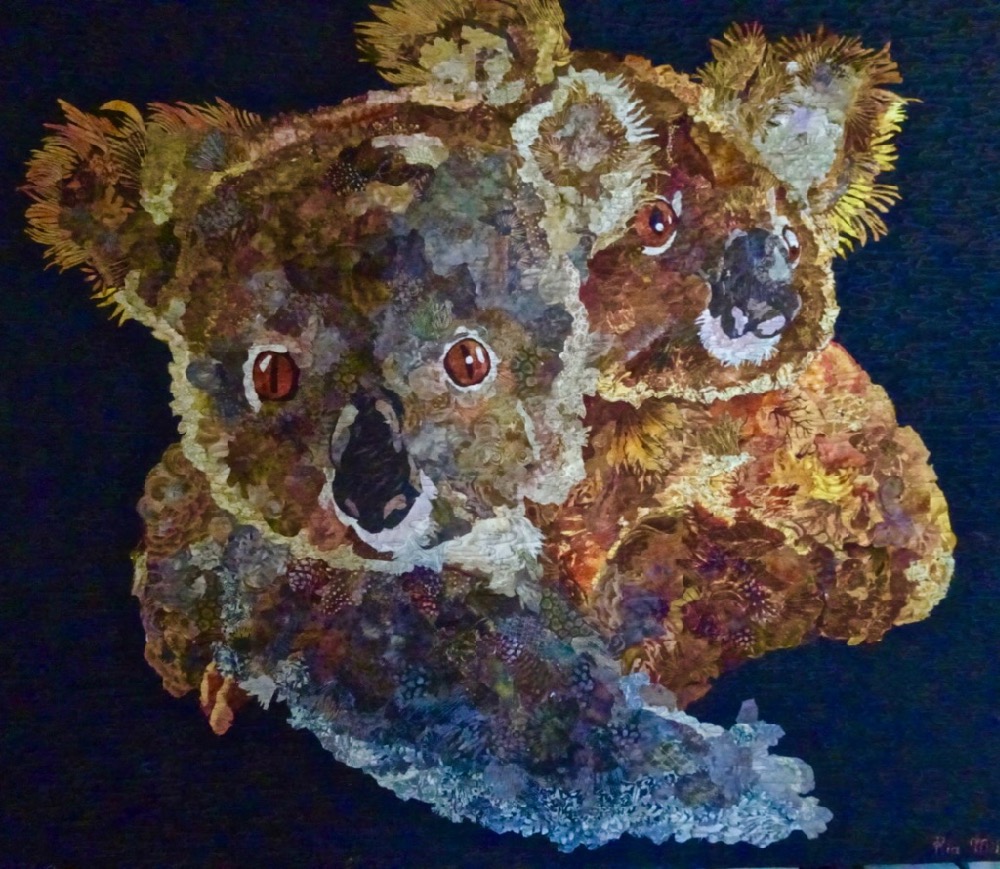
Julie Sherrick’s choice of fabric prints for her German Shepherd Rufus below, does a good job of indicating the thick texture of his fur with smaller repeating patterns, and the fluffy fringe around his chest with larger and elongated prints. In the end, you can imagine sinking your fingers into that fur to give Rufus a good scratch.
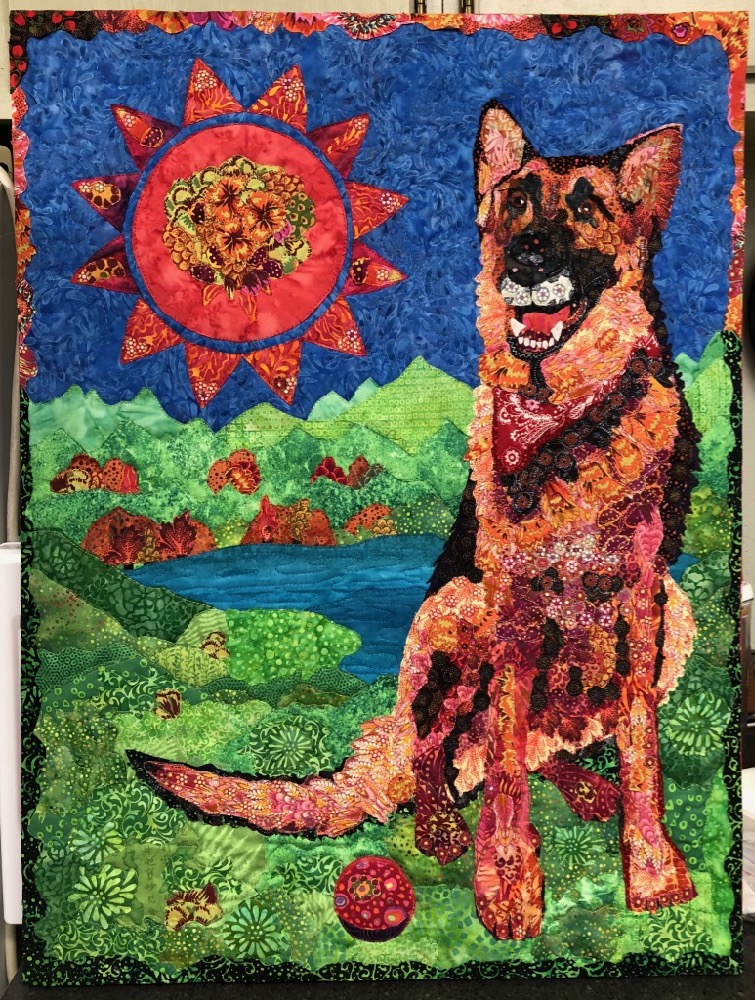
Flowing Fur
Diana Bartelings’s Markhor goat has a long and flowing beard of fur. Fabrics patterned with elongated and wavy designs helped her create that distinctive mass of fur—cut and placed in such a way as so they flow downward from his chin. A few of the fabrics she used can be seen in the photo below right.
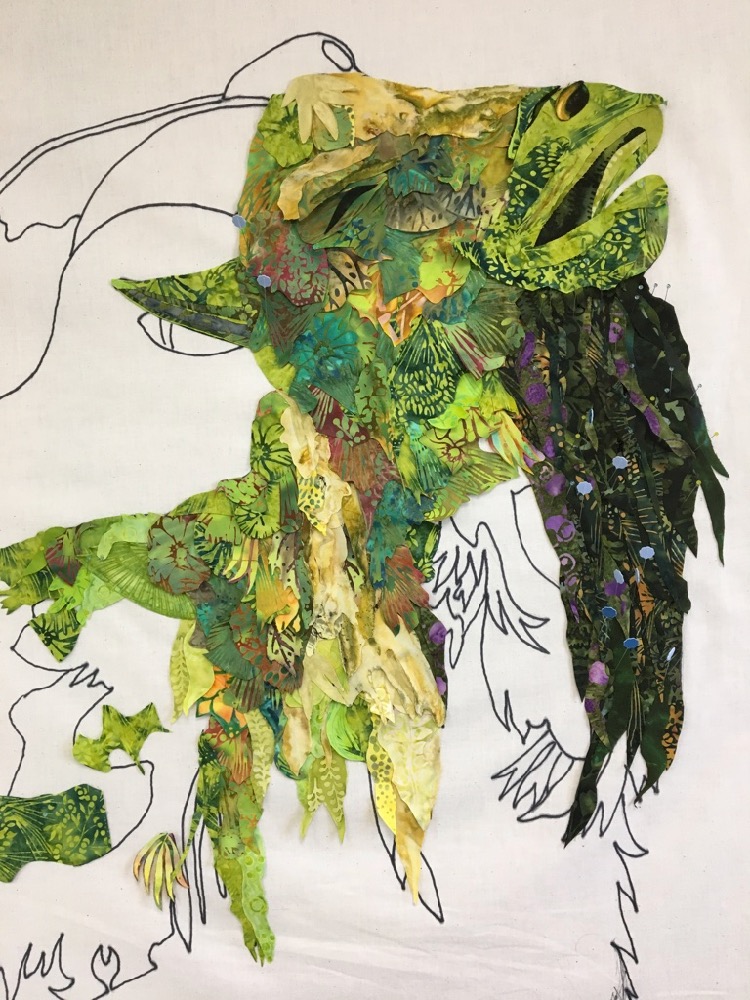
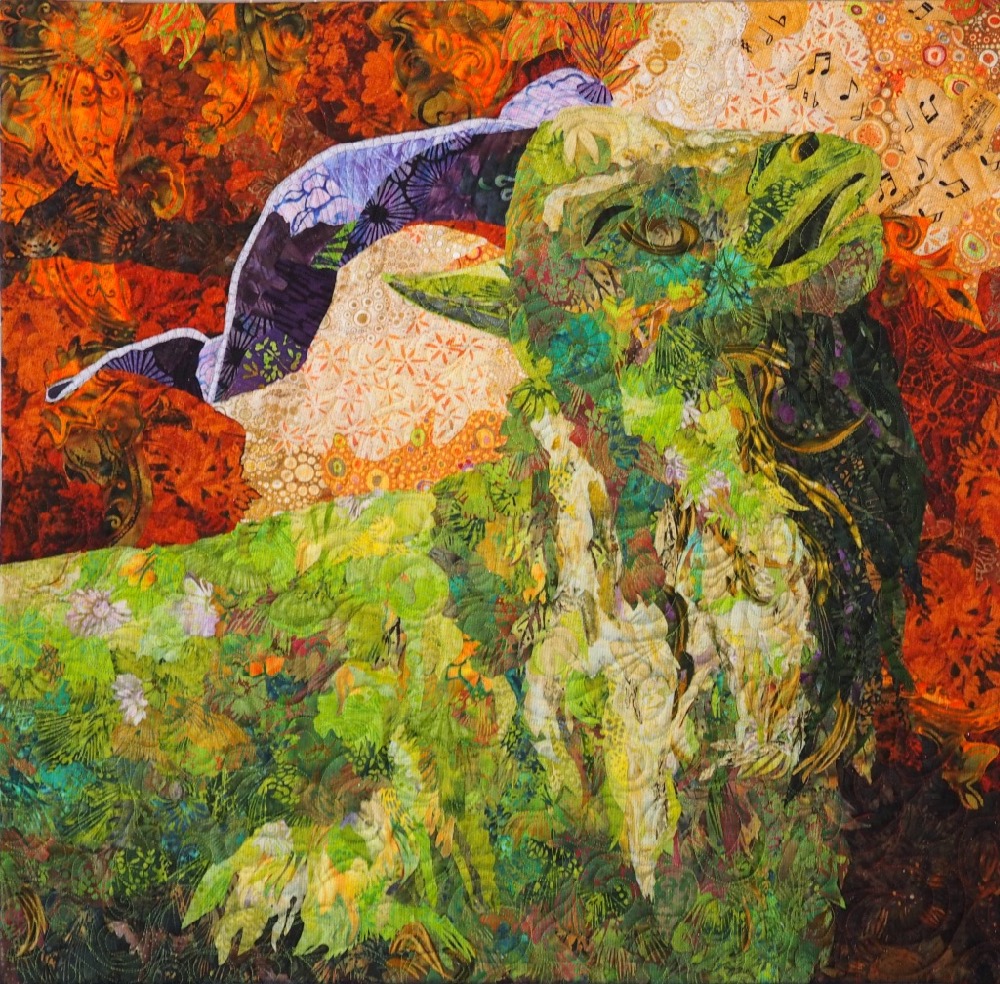
Joan Hodgeboom used both the flowing pattern in her fabrics and an elongated quilting design to give her musk ox long, flowing hair. She was careful to arrange the fabric so that the prints ran in the direction of the musk ox’s windswept fur.
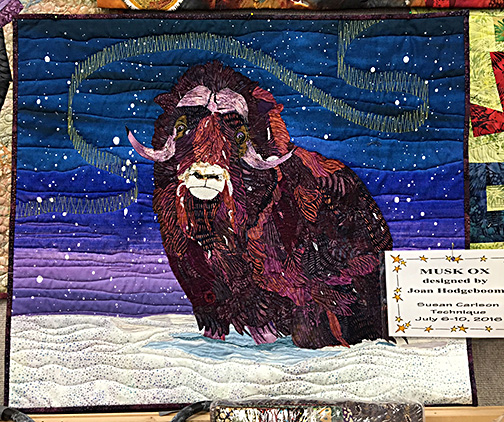
These are but a few successful examples of how fur in fabric collage has been created using the patterns found in printed fabrics. As you’ve seen, color can be nearly anything you want, but visual texture and contour is critical. Whether smooth, fluffy, or flowing choosing the right fabric print goes a long way toward depicting these furry creatures.
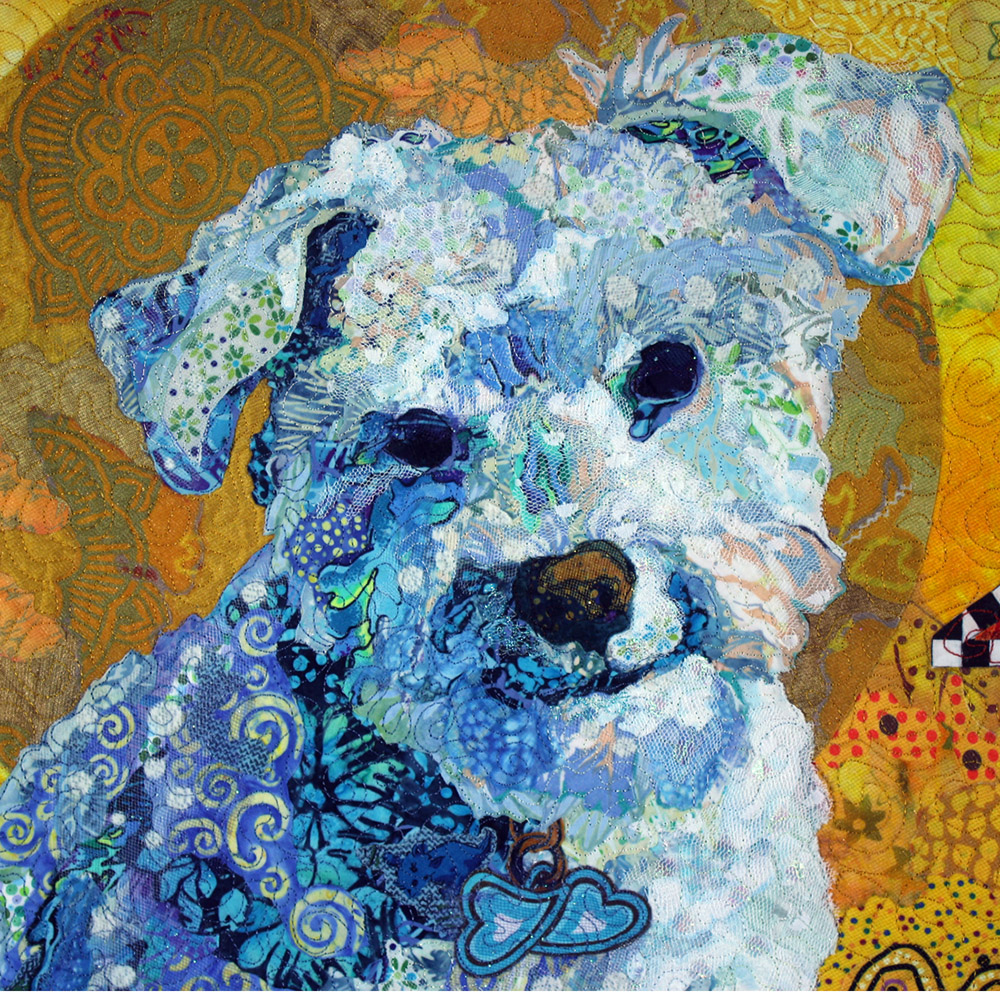


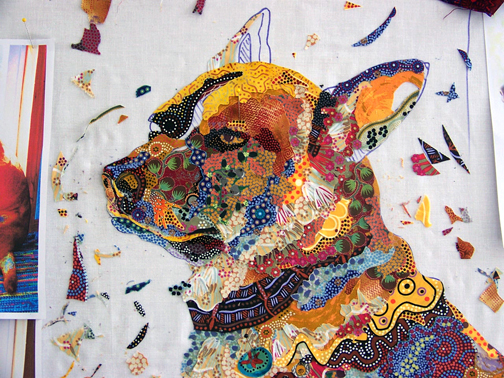
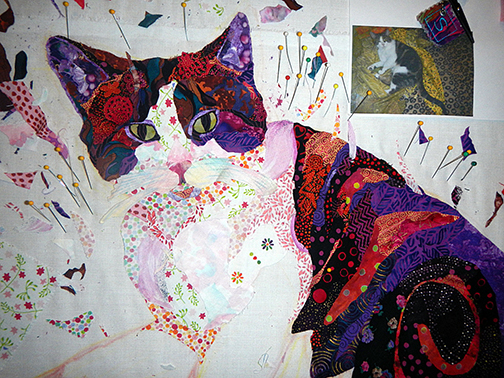
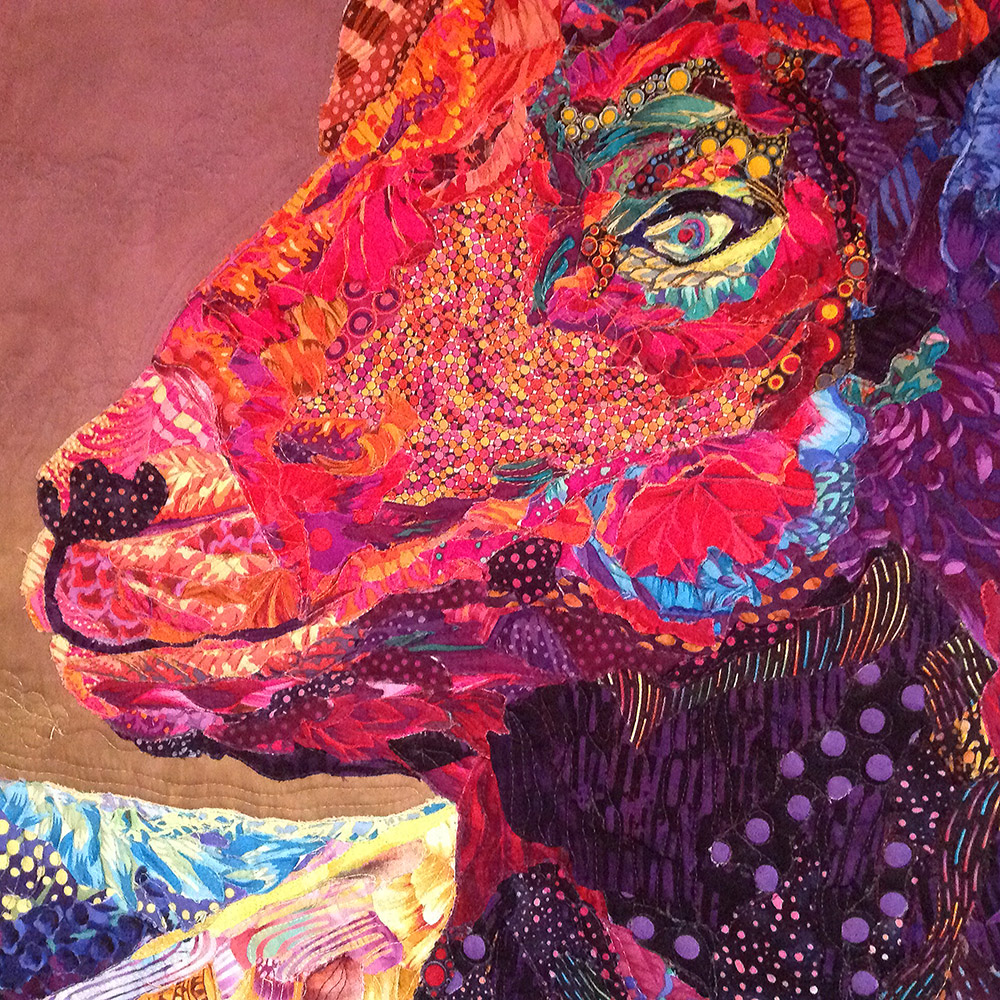
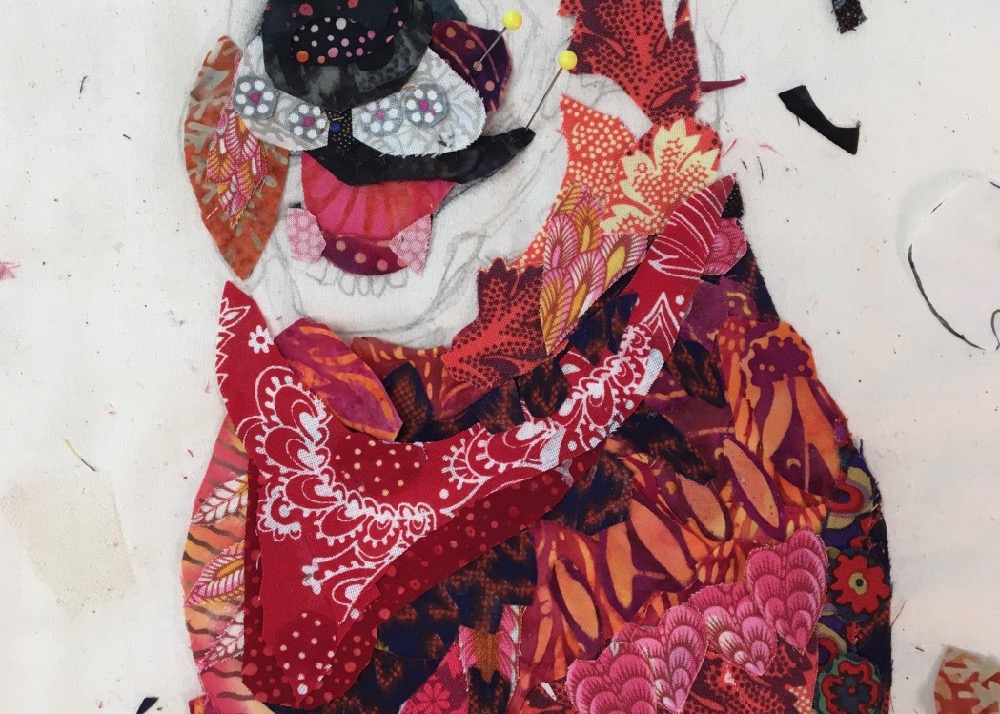


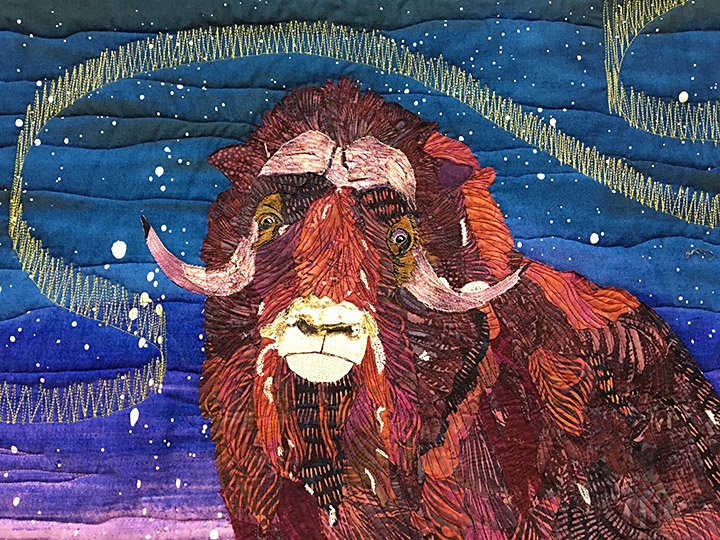
These blogs are so informative and helpful. As I am preparing to create our own dog “Ollie”, selecting the fabrics with lighter values than I would normally be using has been a challenge. Thanks Susan for the encouragement of these blogs that allow me to percolate some new ideas.
Thank you for this timely blog post on how to create fur in a collage. I am collecting fabrics to depict my brother’s dog in a class next September & this gives me a good idea of what to look for in the fabric prints.
I love that you used students’ work in this along with your own. Everyone has her (or his?) own way to approach fur. The work is amazing.
thank you Susan, I so enjoyed your information and all the ladies” and your work.